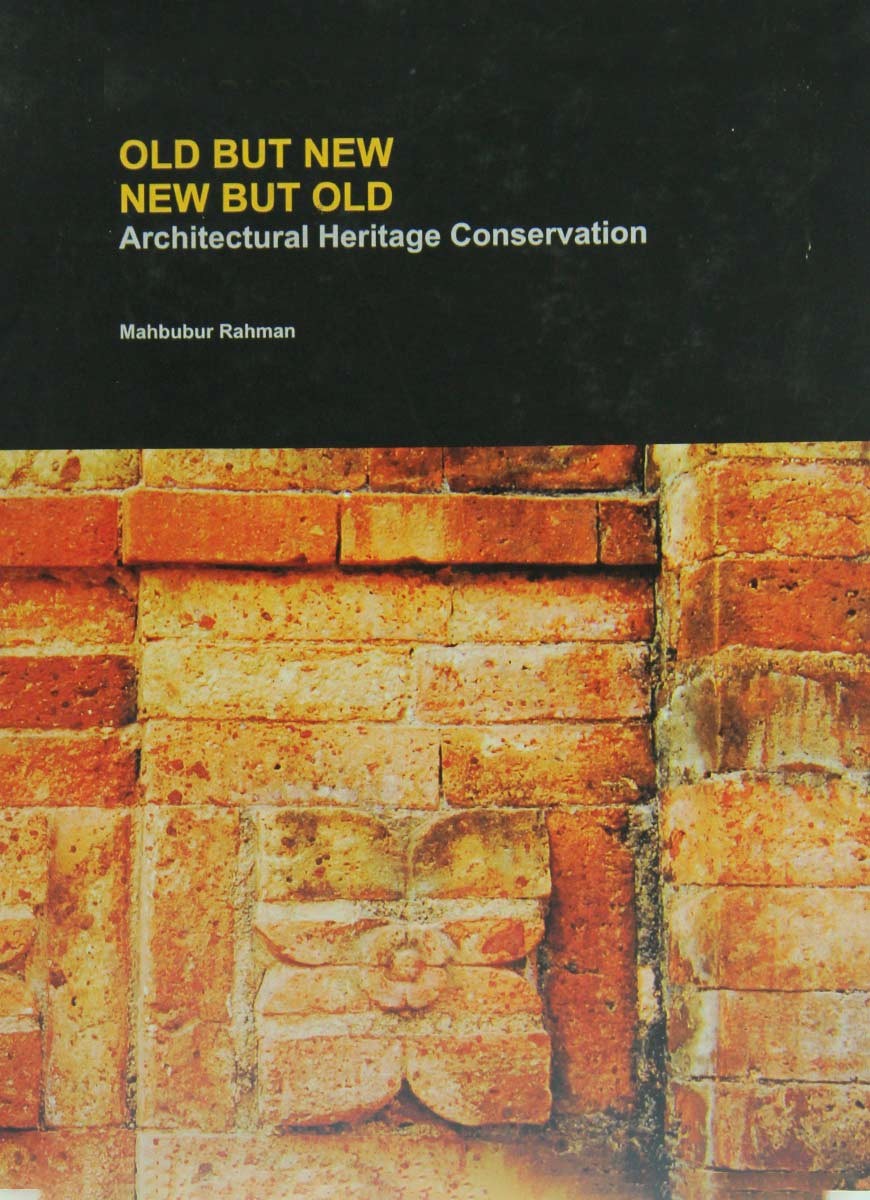

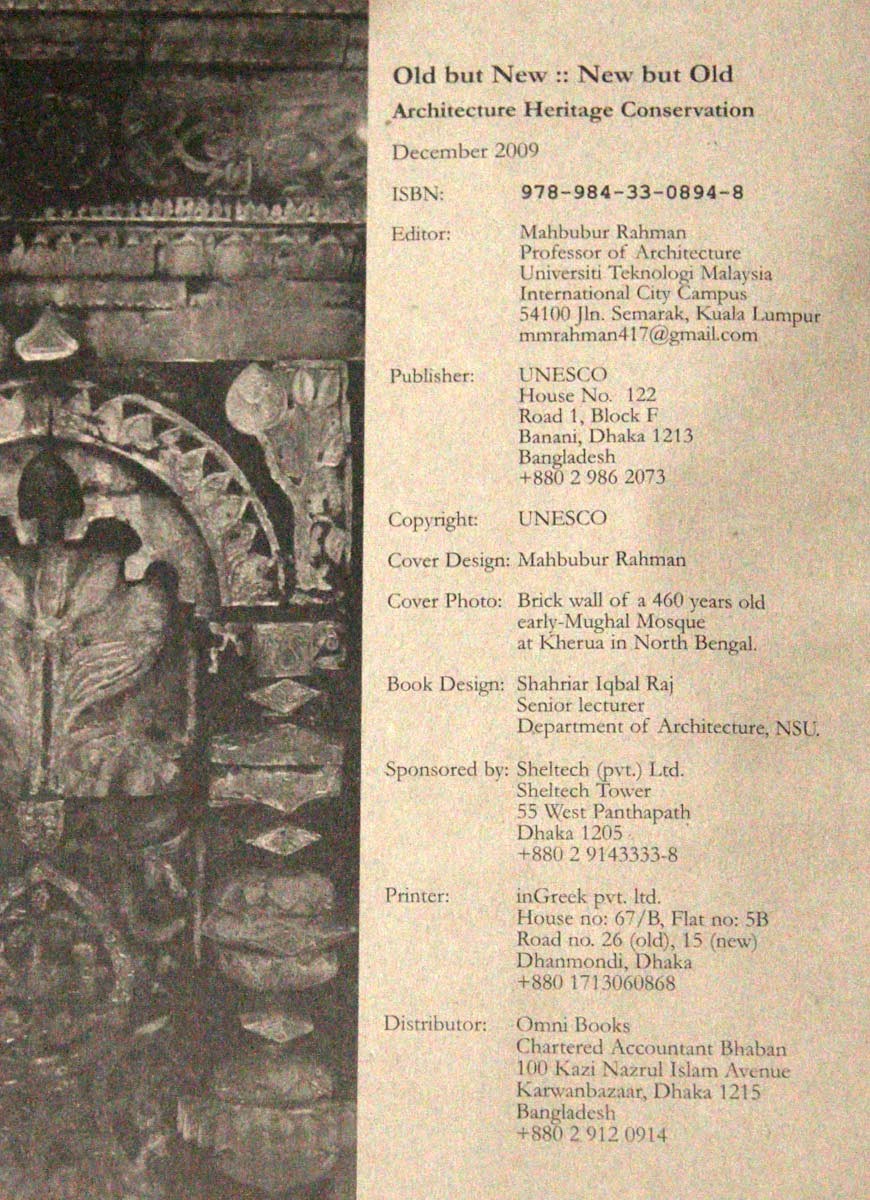
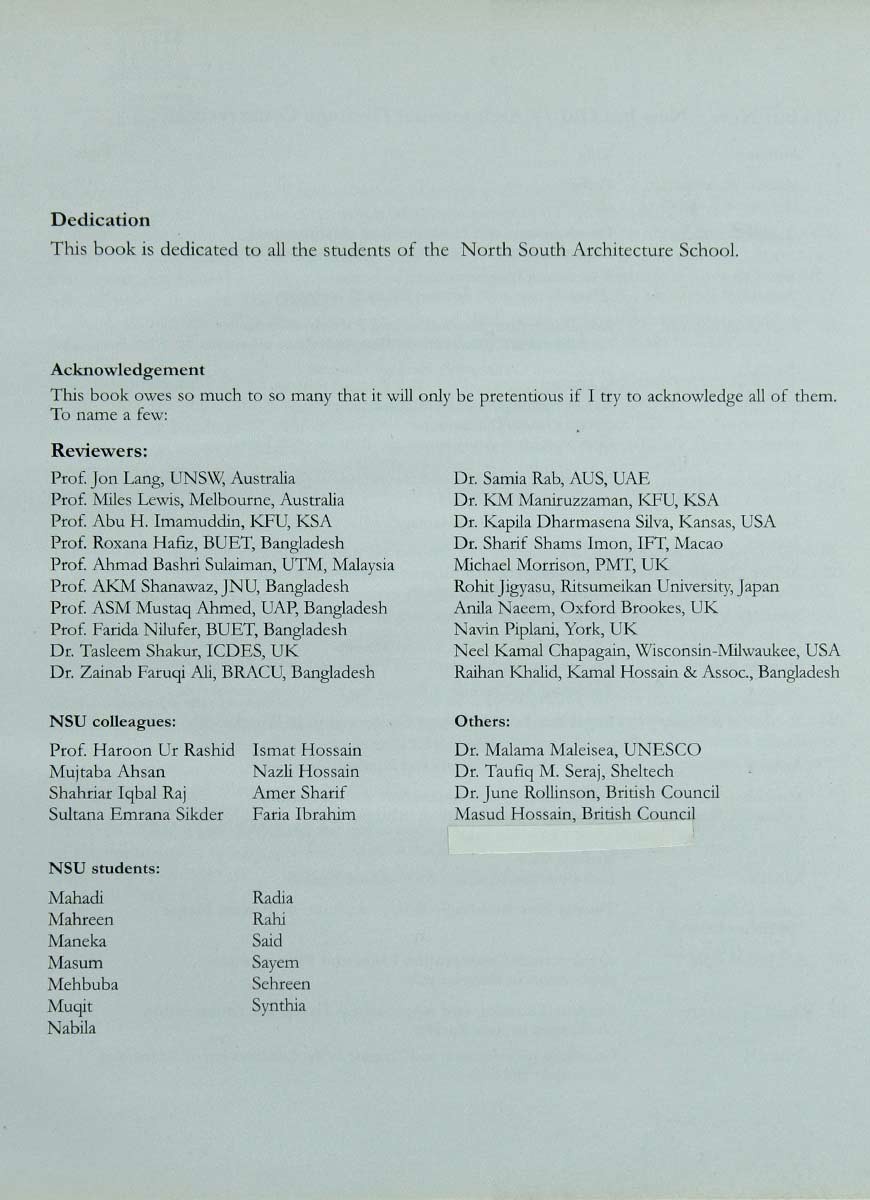
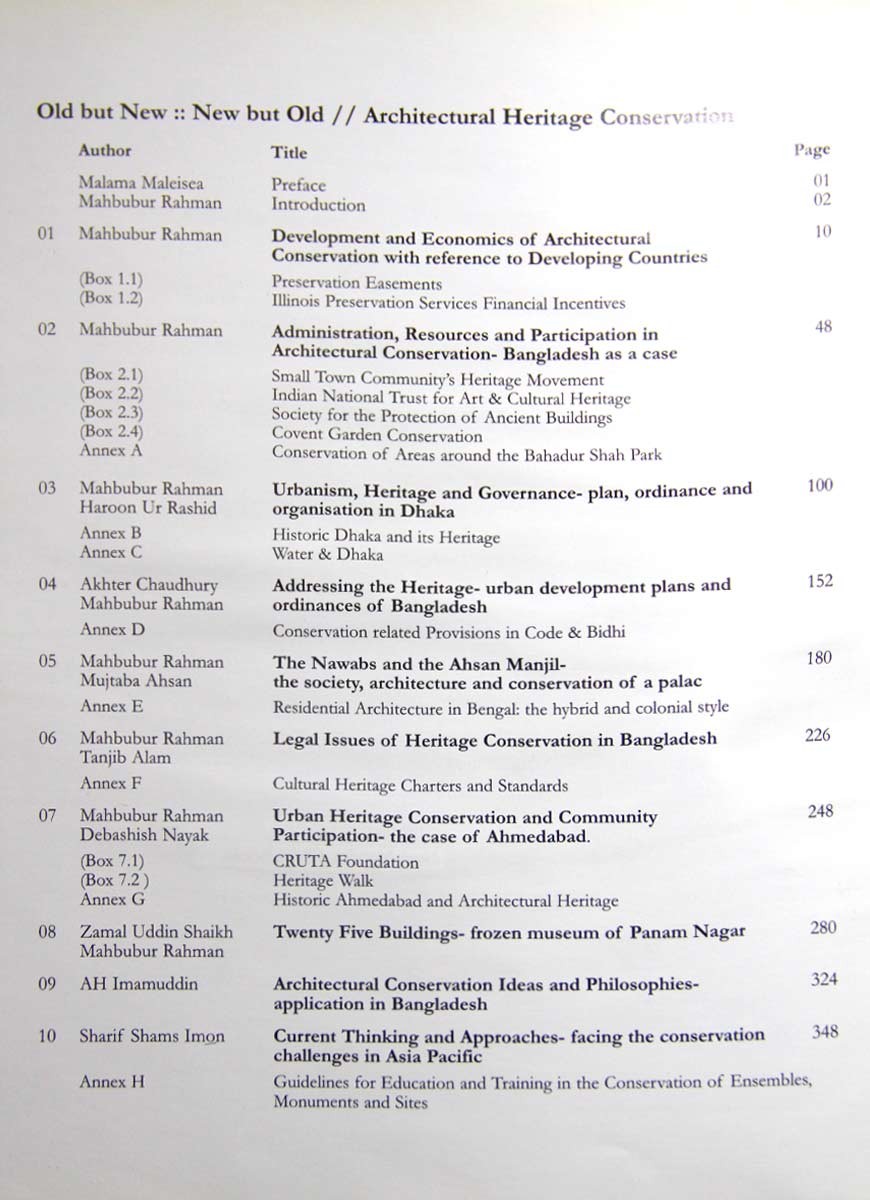
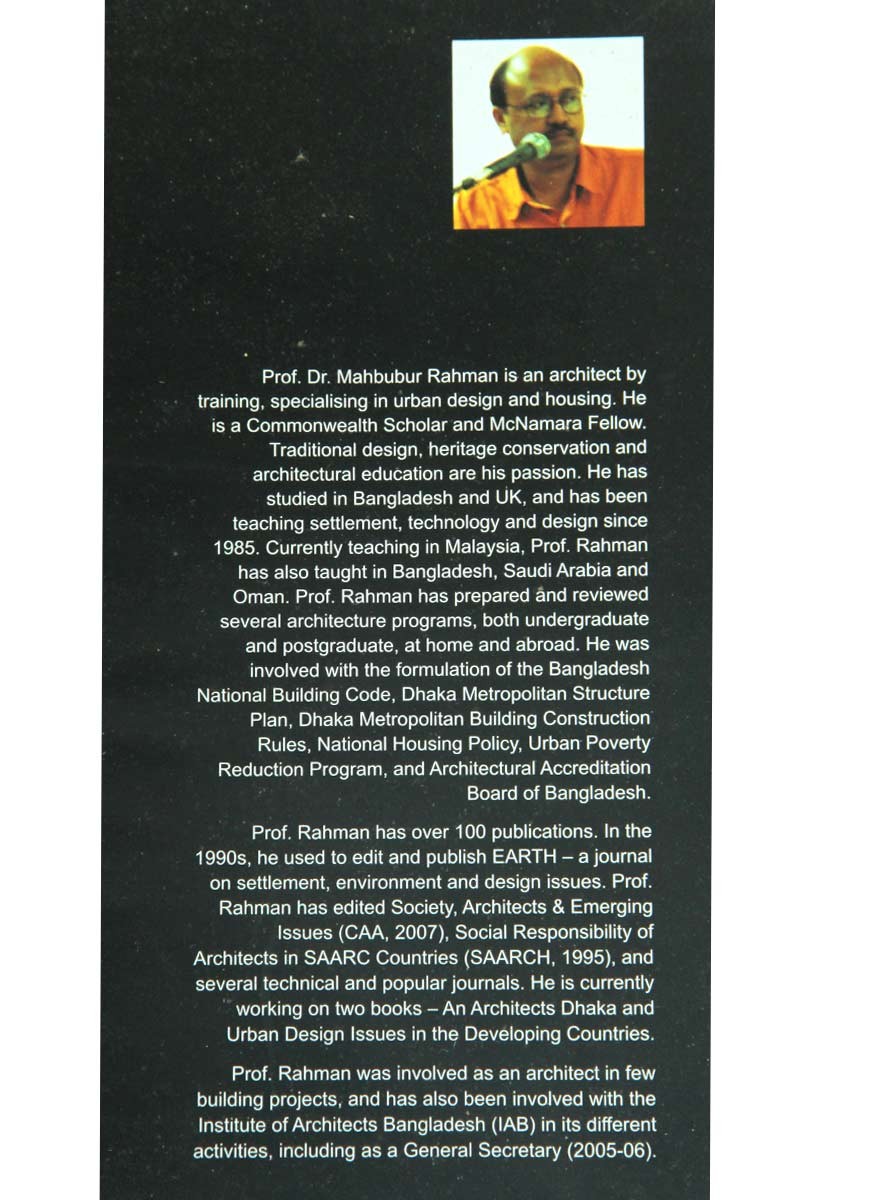
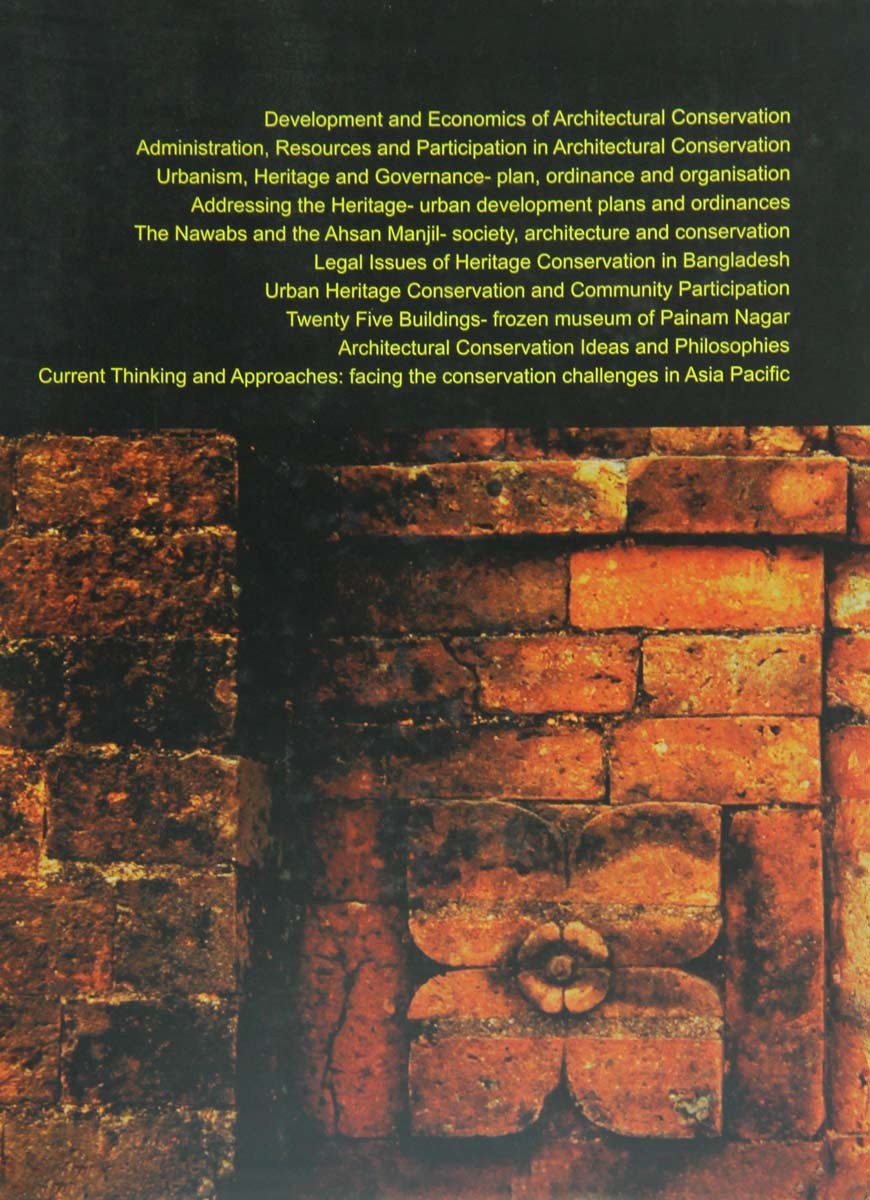
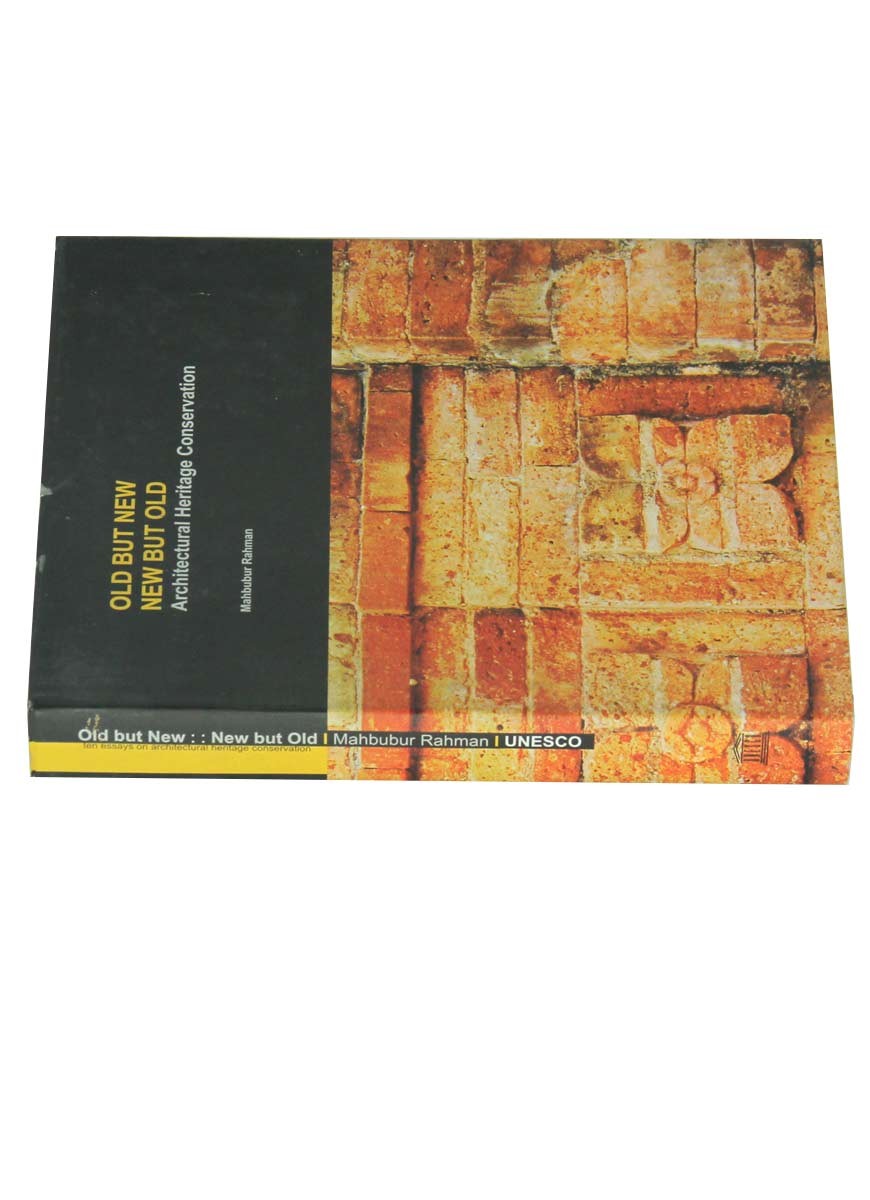
Note : All deposit is refundable
The idea for this publication, "Old but New — New but Old" evolved out of a workshop of the same title in 2007, which marked the culmination of the coursework of some students of the Department of Architecture at the North South University. Publications on conservation and preservation of rich architectural and cultural heritage dating back over a few millennia are few and far between in Bangladesh. Awareness on the imperative of conserving architectural heritage is poor in both official and public domain. The concept of conservation of heritage building, area or community, is at the best, elementary and at the worst, non-existent. With weak and misunderstood institutional or legal basis for conservation, it is hardly a concern of any public policy domain in Bangladesh. Much architectural heritage in the country has already been lost to [re]development. The intense commercial pressure continues unabated claiming new victims. Every passing day sees the renewed destruction of buildings of rich and often unique architectural character. The few disparate public attempts at conservation were at the instance of a few enlightened high officials. Even in realms of academia, the interest in conservation is fairly recent; few schools of architecture have courses or access to course materials that directly bear on conservation. There can be no better niche for this publication than this!
The papers included in this publication set out the background and importance of conservation in the broader context of the developing countries. The publication gives a historical overview of the growth and development of urban centers in Dhaka and its vicinity and highlights the heritage buildings that abound the old part of the city and beyond. It discusses conservation in its many facet and dimensions: the cultural and the social dimensions; the evolving legal basis; urbanism and governance; and the absence of policy and institutions.
This publication will be useful in raising the level of understanding, appreciation, and awareness for architectural heritage conservation among professionals, policymakers and perhaps even the general public. It would also be of interest in educational institutions interested in theory and practice of conservation, while conservation of architectural heritage would have a tangible influence on the overall development and composition of the city.
UNESCO Dhaka has supported the publication of this manuscript in line with the global mandate of the organization to help member states in the preservation and development of their cultural heritage. The points of views expressed are entirely of the authors and do not necessarily represent UNESCO officially.
